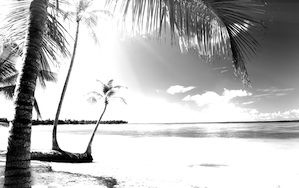As the 60s classic A Whiter Shade of Pale crackled from radios in the UK, the US and beyond, a whiter shade of pale rum was making its own waves around the world. Trademark disputes aside, that’s probably where the similarity between Procol Harum and Bacardi ends, though it was inarguably this era that made the white rum what it is today – a 47 million, 9-litre case category (Euromonitor International).
Having fledged Castro’s nest in 1960, Bacardi grew its wings, increasing volumes by more than 10% in each year of the 60s, and by 1968 it had reached 2 million cases. By the 70s it had become one of the world’s top 10 spirits.
Bacardi carved out a future different from its darker contemporaries. As the first man to age and charcoal filter rum, 19th century founder Don Facundo had produced a light, mixable and versatile liquid. With 60s ad campaigns such as Enjoyable Always & All Ways, Bacardi’s light coloured rum could rival vodka, all on its own.
On the international stage mixability had been, and still is, the key to white rums – even for the new generation of super-premium blends that try so hard not to be Bacardi.
Ian Burrell, self-appointed – but unanimously referenced as – global rum ambassador, has witnessed the rise of the new generation of aged rums. These are rums that have been drawn from multiple Caribbean islands, matured for as much as six years, but are as clear as if they just dripped off the still. “There are many styles but you are definitely seeing more premium rums, such as Banks 5 Island, Diplomatico and Elements 8. And we will start to see more light, delicate rums come to the market,” he says.
With £30-£40 price tags, these products are more reminiscent of Grey Goose than their category leader, Bacardi Superior. “If you look at the price of Bacardi the jump to premium prices is big, so they have to justify the price. That will be the hardest transition,” says Burrell. Attempting to step up from Bacardi to super-premium can be more a game of snakes than ladders. “In vodka you have the steps,” says Burrell, referring to the multiple products and price points that can lead a consumer to super-premium enlightenment, or up the garden path, depending on how you view it.
One brand looking to persuade consumers and bartenders to make the leap is the aforementioned Elements 8. “With the launch of our brand in 2006, when there were no premium whites on the market, we were labelled as crazy for thinking that there would ever be a category,” says Andreas Redlefsen, co-founder of Elements 8.
As Redlefsen points out, in cities such as London white rums’ stage of development is analogous with where aged rums were in the 90s and early 2000s. “The interest is widening and we are seeing our distribution widen in the on-premise,” says Redlefsen. “However, we also manage and control our distribution in order to preserve our premium positioning. We have walked away from volume account opportunities because we felt the fit and feel wasn’t right for the brand.”




